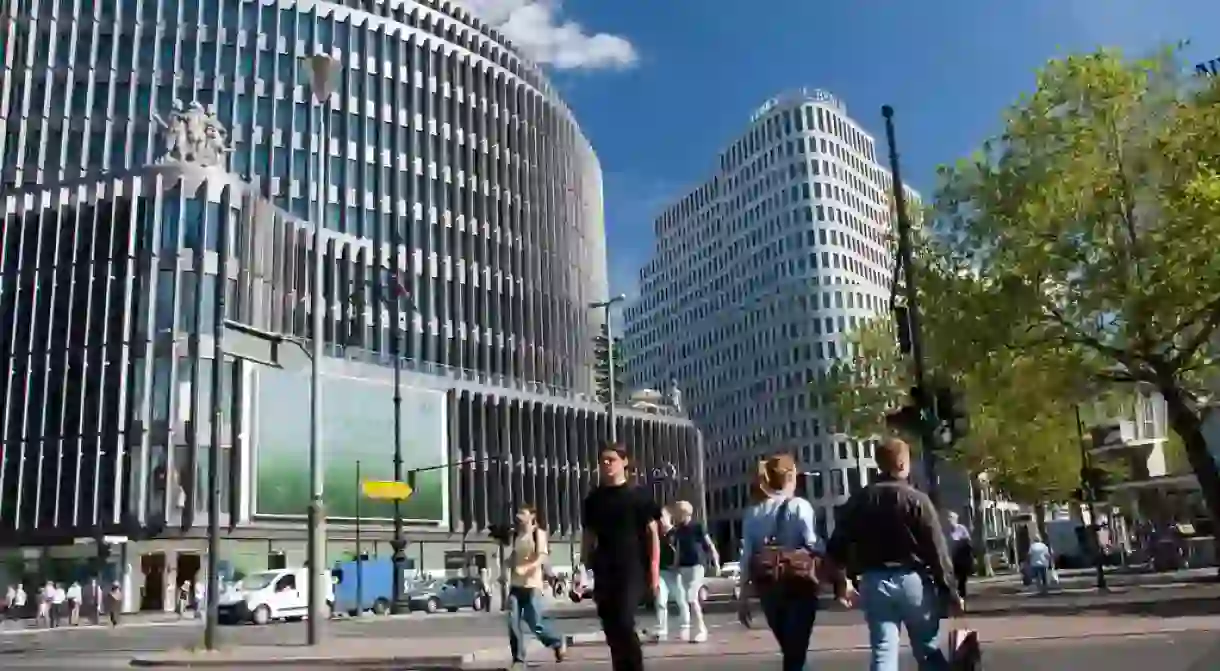The History Of The Kurfürstendamm In 1 Minute

Kurfürstendamm is one of Berlin’s most elegant boulevards. Spanning from the Kaiser Wilhelm Memorial Church in Charlottenburg to Grunewald, this 3.5-kilometer avenue is Berlin’s most famous shopping street, comparable to the Champs-Élysées in both purpose and aesthetic. Its origins, however, may come as a surprise.
Before the streets were graced with designer boutiques and famous department stores like KaDaWe, what is present-day Kurfürstendamm had already beheld some pretty precious cargo. Originally established way back in 1542, Kurfürstendamm was used as a causeway between Charlottenburg Palace and the Grunewald hunting lodge to the west. Afterward, Elector Joachim II used the path for riding horses. For these reasons, the street’s name is derived from the German word ‘Kurfürst,’ which roughly translates to mean ‘prince-elector.’
By the late 19th century, a modern road system was put in at the behest of Chancellor Otto von Bismarck, and Kurfürstendamm began to look more like the fashionable boulevard we know it to be today. In the years that followed, a trolley system was installed, and an amusement park known as Lunapark, modeled after Coney Island, was erected nearby. These developments served to popularize the area as a place of cosmopolitan prosperity. During the roaring 20s, it was a famous meeting spot for the city’s intellectuals. Many cafés, theaters, and even nightclubs cropped up here.

Unfortunately, the street’s heyday was interrupted over the next couple of decades. The Great Depression, the Third Reich, and WWII air raids wreaked havoc on Kurfürstendamm, but just like the rest of the city, it didn’t stay down for long. Within a few years, Kurfürstendamm was West Berlin’s biggest commercial boulevard as the economy rapidly redeveloped in the wake of the war. The street also served as the site of protests and student demonstrations that sometimes turned violent.
Post-reunification, Kurfürstendamm lost its monopoly over commerce because it had to compete with other shopping centers like Alexanderplatz, Friedrichstraße, and Potsdamer Platz. Nevertheless, ‘Kudamm,’ as it is often nicknamed, was able to maintain its historic reputation as a place of high culture, western liberalism, and commerce.
Today, Kurfürstendamm and its extension, Tauentzien Straße, contain shops for all tastes and budgets. On one end, there is the Europa-Center, which contains 70 restaurants and shops including many international chains like Adidas and Claire’s. At the other, shoppers will find chic luxury brands including Valentino, Dolce and Gabbana, Chanel, and Yves Saint Laurent.
📅 Opening times depending on the stores













